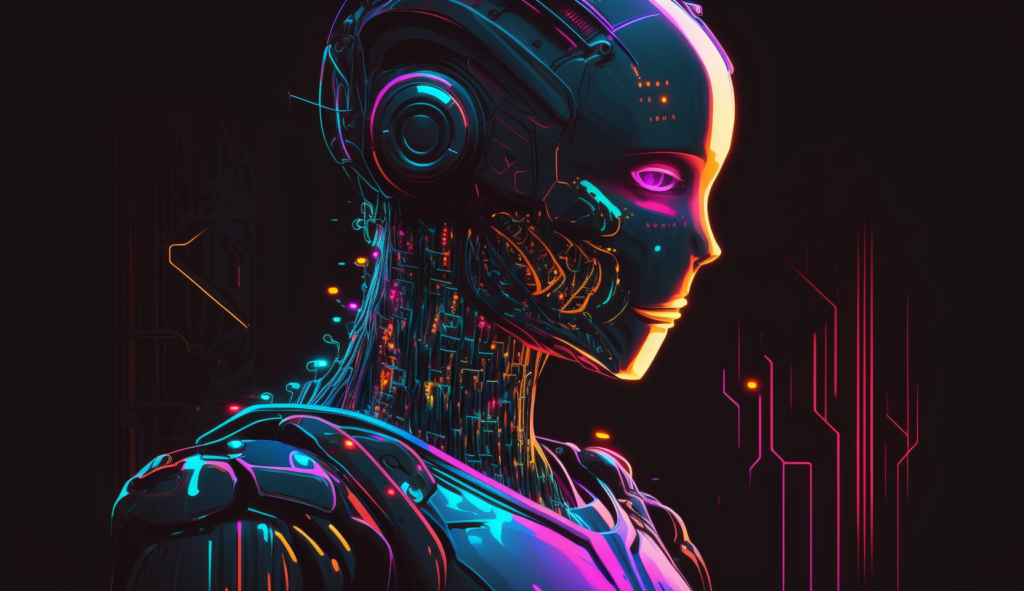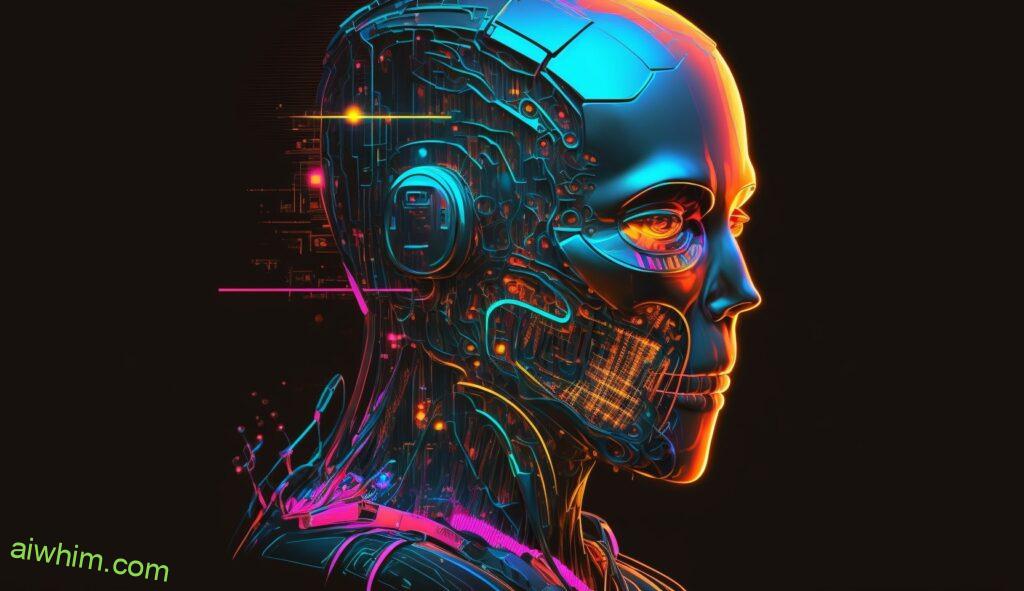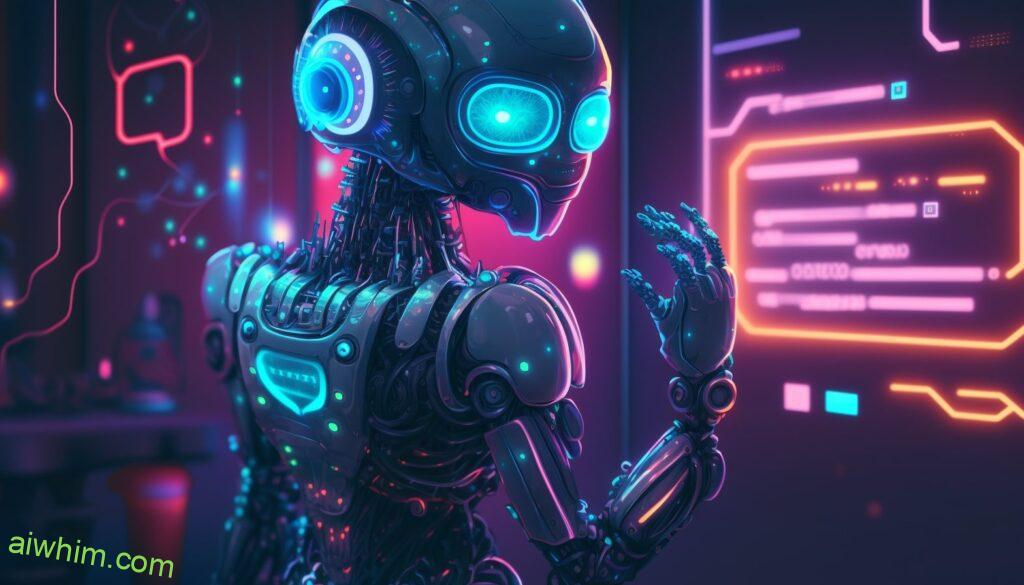Are you a statistician? Do you ever worry that Artificial Intelligence (AI) will replace your job one day? It’s an increasingly relevant concern, as AI is becoming a more integral part of our daily lives. The truth is that AI has the potential to revolutionize certain aspects of the field of statistics – but what does this mean for those employed in the profession? In this article, we’ll take a look at how AI could affect the role of statisticians and consider what steps can be taken to ensure their continued relevance.
The past few decades have seen rapid advancements in technology and artificial intelligence, with new tools being developed all the time. This shift has had profound implications for many industries – including statistics. Already, machines are capable of performing calculations faster than humans ever could before, leading some to suggest that they may eventually replace human statisticians altogether. But while it’s true that advances in technology have opened up new opportunities for automation within the field of statistics, there still remain tasks which only people can do well.
So just how much influence will AI have on statisticians’ jobs? Will it lead to them being replaced entirely or simply put additional demands upon their roles? Is there anything that workers in this profession can do now to prepare themselves for future changes? Read on to find out!

Before we get started: Want to know if statisticians are among the 100 jobs most likely to be taken over by AI? Our study sheds light on their position.
Definition Of Artificial Intelligence
Artificial intelligence (AI) is a type of technology that focuses on creating intelligent machines which can think and act like humans. It’s an interdisciplinary field, combining elements from computer science, psychology, philosophy and linguistics. AI has been around for many years but has only recently become accessible to the public due to its increasing affordability.
At its core, AI seeks to create algorithms or systems that are able to perceive their environment and take appropriate action in order to achieve some goal. This could include anything from predicting stock market trends to playing chess or driving a car autonomously. By leveraging powerful computing resources along with advanced data analysis techniques such as machine learning, AI is capable of making decisions faster than any human ever could.
This technology is rapidly evolving and there’s no limit to what it can do in terms of advancing our understanding of the world around us and improving how we interact with it daily. So while AI may seem intimidating at first glance, it really holds great potential when used responsibly – both now and into the future.

Overview Of Statistician Job Description
Statisticians are responsible for analyzing and interpreting large amounts of data. They use a variety of tools, techniques, and methods to answer questions related to their research or work projects. From organizing surveys to conducting experiments and forecasting trends, statisticians play an important role in helping organizations make informed decisions.
The job description of a statistician involves collecting, cleaning, manipulating and summarizing data sets. Statisticians must be able to apply appropriate statistical software packages like SPSS or STATA as well as utilize various statistical methods such as linear regression, ANOVA, factor analysis etc., to analyze the collected information accurately. Additionally, they also need excellent problem-solving skills which help them identify patterns from complex datasets. Furthermore, they must have good communication skills so that they can explain results effectively with colleagues and stakeholders alike.
When it comes to predicting future trends using historical data, statisticians employ sophisticated techniques such as time series analysis or logistic regression models. These require advanced critical thinking abilities along with knowledge about probability distributions and confidence intervals. In addition to having strong technical skillset in mathematics and statistics, statisticians should possess exceptional attention to detail when it comes down to performing tasks involving numerical accuracy.
In summary then: Statisticians carry out vital roles within organizations through making sense of large quantities of information by utilizing powerful data analysis techniques while combining hard analytical aptitude with soft interpersonal skills – all necessary components for success in this field!

What Is AI Capable Of?
Perhaps the most striking irony of our time is that one day, machines may replace us in many aspects of our lives – including statisticians. Artificial Intelligence (AI) and its subfields such as machine learning, natural language processing, deep learning, computer vision, and predictive analytics are becoming increasingly capable of tasks previously thought to be solely within the realm of humans.
The advancements made in AI have been mind-blowing and concerning for some. But what can AI really do? What jobs will it take away? And more importantly, how will this affect the work of statisticians?
When we look at AI capabilities today, there are a few key areas where they excel:
- Machine Learning – Machines can now use data sets to develop algorithms which allow them to learn from past experiences and make predictions about upcoming events.
- Natural Language Processing – Machines can understand human speech and respond with relevant information or actions based on context.
- Deep Learning – This technique involves feeding layers upon layers of data into an algorithm to teach it complex patterns like facial recognition or medical diagnosis.
- Computer Vision – Computers can detect objects in digital images and videos by recognizing shapes, colors, textures and other features.
- Predictive Analytics – By analyzing large amounts of data over time, computers can build models that predict future trends or outcomes.
It’s clear that AI has the potential to significantly reduce workloads across industries – including those related to statistics. However, while certain tasks may become automated in the near future due to advances in technology, statisticians still bring unique skillsets which cannot be replaced by machines anytime soon. These include strong problem solving abilities; critical thinking; creativity; social intelligence; collaboration; communication; knowledge management; ethics & integrity; project management; and technical proficiency – all necessary elements when conducting research or interpreting results accurately. It is also important to note that automation should not result in job losses but rather create new roles for individuals who possess these qualities in order for businesses to stay competitive in a rapidly changing landscape. So rest assured that although AI may automate some parts of your job as a statistician, you won’t be out of work just yet!

How AI Could Impact The Field Of Statistics
The impact of Artificial Intelligence (AI) and automation robotics on the field of statistics has been a contentious issue among statisticians. While these new technologies may have the potential to revolutionize data processing, many worry about its effect on job security within their profession.
When it comes to AI’s impact on statistics, there is no one-size-fits-all answer. The use of machine learning algorithms can help automate mundane tasks like compiling large datasets or creating visualizations from raw data. This could result in more efficient workflows and faster analysis times for those that leverage this technology. However, the downside is that some jobs which require manual labor may be replaced by machines completely.
At the same time, there are still plenty of areas where human expertise will remain essential. For instance, developing statistical models requires an understanding of how to interpret and analyze data – something only humans can do at present. Despite advances in algorithm development, AI cannot yet come close to replicating the level of creativity needed for problemsolving or decision making based on complex data sets. In other words, while we need to be mindful that automation does pose certain risks when it comes to the job security of statisticians, there are also plenty of opportunities available through incorporating AI into the workflow processes.
Statistics remains an ever-evolving discipline that depends heavily on advanced mathematical techniques and creative problem solving skills – both of which will continue to prove invaluable in the future regardless of technological advancements in robots and artificial intelligence. With thoughtful consideration towards leveraging existing tools while maintaining high standards in terms of accuracy and integrity, statisticians have every reason to believe they can stay ahead in this rapidly changing landscape without sacrificing any job security along the way.

Use Of Machine Learning Algorithms
The use of machine learning algorithms has become increasingly popular in the field of statistics. Algorithm applications range from predicting stock prices to analyzing customer data for marketing purposes. Artificial neural networks, supervised learning, and unsupervised learning are just a few examples of how ML algorithms can be used to help statisticians make accurate predictions based on complex datasets.
In supervised learning, a computer is given labeled data that it uses to predict future outcomes with higher accuracy than before. This type of algorithm works well when there is an established relationship between input and output variables. Unsupervised learning, meanwhile, relies on unlabeled data which the computer attempts to learn by itself without any human guidance or direction. By clustering data points together according to similarities or differences within them, this type of algorithm helps uncover trends that would otherwise remain hidden if they were manually examined.
ML algorithms offer many advantages over traditional statistical methods such as faster processing speeds and greater precision in making predictions. Additionally, these types of algorithms require less upfront work compared to more manual approaches like regression analysis or hypothesis testing. As technology continues to evolve and improve, AI-driven predictive analytics will only become more powerful – giving statisticians an invaluable tool for understanding their data and deriving insights from it quickly and accurately.

Benefits Of Using AI Instead Of A Statistician
As we discussed in the previous section, advances in machine learning algorithms have enabled us to use AI for data analysis. This has clear benefits over a statistician as it can offer cost savings and faster results with greater accuracy.
The automation of processes that would normally require manual labor from a statistician means more time is freed up for other tasks. By using AI, businesses can get their desired results without needing to hire an expensive professional or outsource work overseas. The cost savings alone are reason enough to consider implementing the technology into existing processes.
Furthermore, AI-assisted data analysis can be completed much quicker than traditional methods due to its automated nature. Additionally, there is significant potential for improvement in terms of accuracy when compared to human input since machines lack bias or preconceived notions about any given data set. Not only does this mean higher quality outcomes but also fewer mistakes that could lead to costly delays or errors.
Overall, utilizing AI offers numerous advantages over hiring a statistician: lower costs associated with personnel; faster completion times; and improved accuracy from unbiased data analysis tools. If your organization wants access to these benefits then investing in advanced analytics software may just be the solution you’re looking for.

Challenges In Replacing Statisticians With AI
Replacing statisticians with AI is an idea that paints a dystopian future, where machines have replaced humans in the workforce. It’s easy to imagine robots and computers rapidly taking over jobs at lightning speed, leaving people without employment or purpose. However, while automation can streamline certain processes, there are several major challenges when it comes to completely replacing statisticians with AI.
First of all, data scientists who use machine learning need robust datasets to work from. This means they require extensive knowledge about how to properly curate data sets so that their algorithms can be reliable and accurate. Without this expertise, any automated system will produce results of questionable quality. Moreover, AI often lacks ethical implications inherent in human decisions; for example, when dealing with sensitive information like medical records or financial documents. Therefore relying solely on automation could lead to serious issues related to privacy and security violations.
Finally, there’s also the question of job security if statisticians were suddenly replaced by AI systems. Not only would unemployment levels rise dramatically but workers would also lose out on valuable skills needed to stay competitive in today’s ever-changing economy. Ultimately transitioning away from the traditional model of statistical analysis may save costs initially but it isn’t necessarily beneficial for everyone long term – especially those whose livelihood depends upon doing such tasks manually every day.

Ethical Issues With Replacing Human Workers With Machines
The potential for AI to replace the role of a statistician presents an ethical dilemma. While automated systems could reduce costs and increase efficiency, they may also result in job loss and reduced wages for human workers. Moreover, there are implications surrounding the automation ethics of using machines as replacements for humans.
Questions arise regarding the impact that this shift would have on society as a whole. How will people who lose their jobs due to automation find alternative work? What legal protections should be put in place to protect those affected by machine-based labor displacement? There is also concern over how such technologies might affect our perception of what it means to be human. Will we become desensitized or even dehumanized when interacting with machines instead of fellow human beings?
These issues present difficult challenges which must be addressed if we want to move forward responsibly with replacing traditional positions like statisticians with automated solutions. We need effective policies that ensure fair treatment for all parties involved while taking into account the ethical implications of introducing these new forms of technology into our lives. The future success of AI will depend not only on its technical capabilities but also on responsible implementation that takes into account both economic concerns and moral considerations alike.

Job Security For Statisticians
Statisticians are a highly sought after profession, especially in the modern world of data and technology. With automation becoming increasingly prevalent in many industries, it can be hard to feel secure in one’s job – but fortunately for statisticians, their job security is still strong. Automation and AI have had little effect on the role of statistician; rather than replacing them, these technologies often require more people with statistical knowledge to interpret data correctly.
At the end of the day, although advancements such as AI do pose some risk, the specialised expertise of statisticians make them well-positioned for continued success regardless of changing trends. Statisticians are here to stay!

Skills Sets Necessary To Work In AI As A Statistician
The world of artificial intelligence and data science is rapidly expanding, and the roles within this new industry are diverse. As a statistician, you need to know that AI won’t be replacing your job anytime soon; instead, it will open up opportunities for growth in skillsets like machine learning, data engineering, predictive analytics, data visualization, and deep learning.
To become an AI practitioner or data scientist requires more than just technical knowledge: you must possess the ability to think critically about complex problems and develop creative solutions. Moreover, the nature of these jobs requires strong communication skills so you can effectively communicate with stakeholders from different backgrounds. A successful AI professional needs to have a thirst for continual learning as technology advances quickly and offers new tools to work with every day.
These days many people strive for freedom when it comes to their occupation. With the right skill set – both technical and interpersonal –AI professionals can take advantage of flexible working arrangements such as remote workplaces or self-employment. This allows them to pursue projects they’re passionate about while having complete control over their schedules. Plus they get to explore cutting edge technologies which could lead to exciting career paths that were previously unimaginable!

Future Predictions For AI And The Field Of Statistics
It has been suggested that Artificial Intelligence (AI) could replace statisticians in the near future. But is this really true? While it’s true that AI and robotics have made their way into many jobs, data scientists are still needed to interpret numerical patterns. As a result, there are several predictions for the field of statistics:
- AI will continue to be integrated into more occupations, but those who possess advanced knowledge of mathematics and data science will remain valuable assets.
- Automation technologies will allow statisticians to focus on higher-level problems instead of spending time completing repetitive tasks.
- With access to larger datasets and improved algorithms, statisticians can increase efficiency while gaining better insights from large amounts of data.
- Companies looking to stay ahead of the competition must invest in both robotics and automation technology as well as hire qualified professionals with expertise in the area of data science.
Therefore, although AI trends indicate an increased presence in the workforce, they do not point toward complete replacement of human roles within the statistics field anytime soon. Instead, we can expect a combination of robots working alongside humans as each contributes uniquely to increasing productivity through automation and analysis respectively. So far, these future predictions suggest that statistical analysis skills won’t become obsolete any time soon.

Potential Solutions To Mitigate Job Losses Due To Automation
The potential of artificial intelligence (AI) to replace jobs is already becoming a reality. As technology advances, many people in the field of statistics are concerned about how this will affect their livelihoods and whether they can remain employed. Fortunately, there are several measures that can be taken to mitigate job losses due to automation.
One such solution is job retraining. By investing in training programs for workers whose skills may no longer be relevant in the age of AI, companies can ensure that employees have up-to-date knowledge and skills required for success in the future. Automation alternatives are another option that businesses should consider when looking for ways to reduce job loss due to technological advancement. Investing in technologies like robotic process automation or automated decision making could help minimize redundancies caused by AI replacing certain tasks within an organization.
Job relocation and diversification strategies also offer potential solutions for mitigating job losses resulting from automation. Companies could invest resources into helping those affected by unemployment find new positions in different fields, enabling them to stay competitive while gaining valuable experience in other areas. This would require significant investments in technology and infrastructure but could greatly benefit those facing displacement due to advancements in AI.
Ultimately, all parties involved—employers, employees, and governments—must work together if we want to create a more secure future with fewer job losses stemming from automation. Solutions such as retraining programs, alternative technologies, relocation initiatives, and diversification efforts must be pursued actively if we hope to protect our most vulnerable communities against economic hardship brought on by rapid changes in the labor market.

Conclusion
In conclusion, it’s clear that the rise of artificial intelligence (AI) and automation will have an impact on the field of statistics. AI is capable of taking over many tasks that are currently performed by statisticians; however, there are also many opportunities for growth in robotics and automation companies.
The current state of technology has already made massive leaps forward, yet I believe we should not fear change but instead embrace it: technological advancement can open up new doors for innovation and progress. We must keep looking ahead at what lies beyond our horizon with optimism and enthusiasm if we want to make the most out of this revolutionizing age. Just like how people worried about cars replacing horses back then, let us take solace in knowing that while some jobs may be lost, others will arise from their ashes – perhaps even more fulfilling ones than before!
Author: Ole Paulson
Author Bio: I’m Ole and on this website, I share everything there is to know about Artificial Intelligence, and useful tips for using AI to our advantage. I have a background in data science and research and have been following the AI-space for years. You can read more about me in the “About” page.







